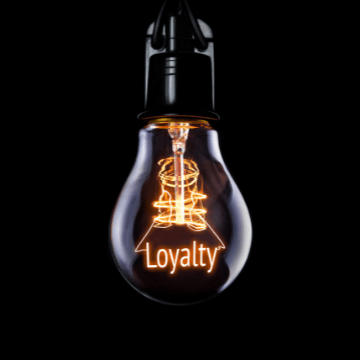
Do you know your company’s Net Promoter Score?
The NPS survey is a widely used market research metric that measures customer loyalty to a brand. It can be used by attractions to gauge how happy guests are with their visit and how likely they are to refer future guests.
The NPS score is calculated from responses from a single-question survey asking for customer feedback about a particular experience, interaction, or product.
The survey provides brands with valuable insight into what’s making guests loyal to your brand — and what’s driving others away.
In this post, you’ll learn how to create an NPS survey.
What are the benefits of using NPS software?
5 tips for framing NPS questions
- 1. Keep your questions short
- 2. Use a simple scale
- 3. Be specific about what you’re asking about
- 4. Follow-up with an open-ended question
- 5. Try to stay away from incentives
How to get NPS Insights in Xola
What is a NPS survey?
NPS scores are typically measured with a single-question survey:
How likely is it that you would recommend our attraction to a friend or colleague?
Guests are asked to respond with a rating of 0 (not at all likely) to 10 (extremely likely).
The responses will help you categorize your guests into three groups.
- Promoters (9-10): These are your truest fans. They’re loyal and enthusiastic about your brand and are likely to fuel your growth.
- Passives (7-8): These customers are satisfied with their experience but they’re not happy enough to rave about it to others. So they probably won’t bring in new visitors.
- Detractors (0-6): These respondents are unhappy with the service they received. They’re unlikely to visit you again and may even discourage others from visiting.
As far as NPS surveys go, there are two main types.
Relational surveys are sent on a regular basis to get a sense of how your customers feel about your brand overall. This is when you’d ask your guests how likely they are to recommend your brand after completing a big milestone, such as following their first visit.
Transactional surveys, on the other hand, are meant to measure a specific interaction with your company. For example, you could send a transactional NPS survey to a guest after they call you to request a refund.
How is NPS calculated?
Calculating your NPS score is easy. Simply subtract the percentage of “detractors” from the percentage of “promoters” and you’ll have your score.
For example, if 5% of your survey respondents were detractors and 70% were promoters, your NPS score would be 65 (70-5).
What is NPS software?
You can use software to help you survey, collect, and analyze NPS feedback from guests at different points in time. The software will store your NPS results, track changes in your scores, and get feedback from guests on what needs to be improved.
What are the benefits of using NPS software?
- Automates the sending of NPS surveys
- Collects feedback from several different channels, including email, chatbots, and SMS messages
- Predicts customer behavior and helps your business prevent guests from abandoning your brand and/or talking negatively about you publicly
- Tracks and analyzes changes in your score in real-time
- Integrates with your other tools so that data can be shared seamlessly
For example, the simplest way to run NPS surveys is to choose a booking software with this functionality already baked in, like Xola.
What are good NPS questions?
Your NPS score can be determined from a single-question survey, but only the follow-up questions will tell you why guests are feeling that way.
Let’s take a look at five common question types found in NPS surveys.
Demographic questions
Start your survey by learning more about your guests and where they come from. Ask them for details like their age, gender, income, and location. This will give you a more complete picture of your customer base. You might even discover new trends in their responses.
The net promoter score question
The most important question is the net promoter score question, where guests will rate how likely they are to recommend your attraction to others on a scale of 0 to 10. Their responses will define your NPS score.
What’s the reason for your score?
Follow-up with an open-ended question asking for a more detailed explanation. Why did a guest respond the way they did? These responses will help you identify the drivers behind your positive ratings and critical areas of improvement.
How can we make your experience better?
Let your guests tell you what they would like to see improved. Alternatively, you can ask them what would “wow” them in a future visit.
Permission to follow up
Finally, ask your guests if it’d be OK to follow up with them. This could be a simple “Yes” or “No” question with an email box underneath. Now, you can reach out to a guest directly about their issue.
5 tips for framing NPS questions
The way you frame your NPS questions can impact the number of responses you receive. A poorly written NPS survey may sit in your customers’ inbox for a long time. Worse yet, they may ignore it forever. Then, you won’t get anything out of sending the survey in the first place.
To avoid this, consider the following tips as you put together your NPS surveys.
1. Keep your questions short
It’s best practice to keep your questions (and survey as a whole) short and sweet. You’ll get valuable insight with three carefully chosen questions that don’t overwhelm your guests. A long list of complicated questions, on the other hand, might cause them to abandon the survey.
2. Use a simple scale
Choose a scale your guests are familiar with. Traditional NPS surveys use numerical scales from 0 to 10. These scales provide guests with a small range to choose from, making it easier for them to express how they feel about their experience. Plus, a simple scale makes it easier for your company to analyze results.
3. Be specific about what you’re asking about
Are you asking guests to rate an experience, customer service interaction, or product? The more specific you are in your survey, the better feedback you’ll receive about the different touchpoints in your customer journey. You may want to create unique NPS surveys about different aspects of your business to get a more wholesome look at the guest experience.
4. Follow-up with an open-ended question
When you ask “What’s the reason for your score?” you’re giving guests a chance to tell you what they liked and disliked about their experience. This is valuable, qualitative feedback that can be further analyzed.
5. Try to stay away from incentives
You might think of offering your guests an incentive like a 15% off discount to reel in more responses. However, this could introduce bias to your feedback. If a guest is hoping to get a nice discount, they likely won’t want to say anything too negative about your brand.
In addition, your survey will be dominated by freebie-seekers, who may not be fully representative of your customer base.
How to get NPS insights within Xola
The takeaway is to keep your NPS survey short and simple.
With Xola’s Net Promoter Score feature (beta!), Xola will send an NPS survey to your customer via email and/or text message. You will be able to send it to all members of a group if you have valid emails and/or phone numbers and you can choose when the NPS survey goes out.
This feature also keeps track of the scores you receive via Xola’s Net Promoter Score Report. This will allow you to identify your true promoters of your brand, as well as any detractors, so you can stay ahead of the game by continuously improving on the areas that need it most.




